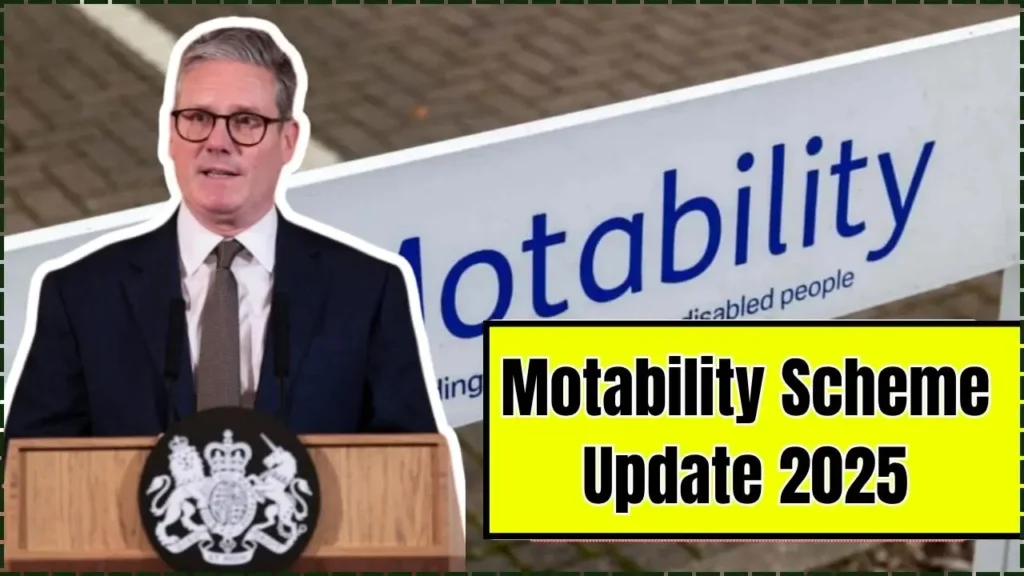Below is a draft news-style article. Before publishing, you should verify with official sources (e.g. Motability Operations, DWP, Social Security Scotland) to confirm the exact implementation dates and amounts.
This week, major changes to the Motability Scheme begin affecting claimants of PIP (Personal Independence Payment) and ADP (Adult Disability Payment).

The reforms include enhanced transitional support, adjusted return periods, and clearer rules for vehicle retention during benefit reassessments. The changes aim to reduce abrupt loss of mobility, though some users warn of residual gaps.
Motability Scheme Update 2025
| Key Change | Description | Source / Note |
|---|---|---|
| Extended Return Periods | Some claimants who lose mobility benefit may keep their leased vehicle for up to eight weeks | Motability Foundation transitional support pages (Motability Foundation) |
| Transitional Support Grants | Financial assistance available for claimants who exit the Scheme after reassessment | Motability Foundation “Transitional Support” (Motability Foundation) |
| Eligibility Retained if Enhanced Mobility Award Maintained | Claimants awarded Enhanced Rate mobility under PIP or ADP will stay eligible | Motability allowances rules |
What Is the Motability Scheme?
The Motability Scheme allows individuals who receive qualifying mobility benefits to lease a new car, wheelchair-accessible vehicle, scooter, or powered wheelchair using their mobility allowance.
Under the Scheme, many vehicle costs—insurance, servicing, repairs, tyres, and breakdown cover—are included.
Eligibility requires being in receipt of a qualifying mobility benefit, such as the enhanced rate mobility component of PIP, or its equivalent in ADP, with a remaining award period of at least 12 months.
In Scotland, ADP (Adult Disability Payment) replaces PIP for many claimants, and individuals receiving PIP/DLA in Scotland are being migrated to ADP.
What Are the 2025 Changes for PIP / ADP Claimants?
Extended Return Periods and Vehicle Retention
One of the clearest changes is the provision for extended return periods for those who lose mobility benefit status. Under the new transitional support regime:
- Some claimants may keep their vehicle for up to eight weeks from the date their allowance ends, assuming the vehicle is returned in good condition.
- Alternatively, a 26-week retention option is also offered in certain cases, albeit with a lower support payment.
These changes aim to prevent immediate loss of mobility and give individuals time to make alternative transport arrangements.
Transitional Support Grants
The Motability Foundation now offers transitional support grants to users who exit the Scheme because their benefit reassessment fails to retain the enhanced mobility award.
Criteria vary depending on when the lessee joined the Scheme (before 2013, during 2013, after 2014). Those eligible may receive refunds of part of any upfront “Advance Payment,” or assistance with adapting a non-Scheme vehicle.
Motability Operations is responsible for contacting affected customers once the benefit reassessment is confirmed.
Preservation of Eligibility When Enhanced Mobility Component Awarded
If a claimant is reassessed and awarded the Enhanced Rate Mobility Component of PIP or equivalent rate of ADP, they remain fully eligible to continue leasing a vehicle under the Scheme.
Thus, for many users, the 2025 changes bring more clarity rather than additional risk—provided their benefits continue at the required rate.
Why Are These Changes Happening Now?
The revisions follow years of policy adjustments and pressure to balance scheme sustainability with support for vulnerable users.
- The Motability Foundation’s transitional support mechanism was introduced to mitigate the impact of benefit transitions (e.g. from DLA to PIP, or DLA to ADP).
- Periodic reassessments of disability benefits have meant that users may lose eligibility unexpectedly. The updated rules aim to build in smoother transitions.
- In Scotland, the shift from PIP/DLA to ADP is ongoing, and the new Motability rules reflect that changes in benefit structure.
- The quarterly price list updates for leasing packages continue, with the October–December 2025 list already published.
These changes seek to make the Scheme more resilient and fair during periods of benefit reassessment and transitions.
Reactions, Risks and Open Questions
Supportive Views
Advocacy groups and some Scheme users have welcomed the extended vehicle-return window and transitional support as protective measures against abrupt loss of mobility.
One positive outcome is that lessees now have a clearer safety net if they lose eligibility, rather than being forced to return a vehicle immediately.
Criticism and Concerns
However, critics warn that:
- Eight weeks may be insufficient for some users, especially those in rural or low-transport areas, to arrange alternative mobility.
- The conditions attached to transitional support (vehicle condition, timely return) may exclude those unable to comply fully.
- Some users may not be clearly informed or fully understand the new process when their benefit status changes.
Additionally, the extent to which Motability Operations, DWP, or Social Security agencies will coordinate effectively in notifying users remains to be tested.
Related Links
DVLA New Classic Car Rules: Driver Must Know: How to Avoid Huge Fine Amounts?
DWP Confirms £538 State Pension Boost: What UK Pensioners Can Expect in 2026
What Claimants Should Do Now
- Check your benefit status and renewal dates for PIP or ADP.
- Watch for communications from Motability or DWP/SSS after a reassessment.
- Review the Motability Foundation’s transitional support eligibility and terms.
- Plan return or alternative transport options in advance, keeping in mind possible eight-week or 26-week windows.
- Seek advice from disability advocacy groups or the Motability customer service if your reassessment threatens your Scheme eligibility.
Conclusion
These 2025 changes to the Motability Scheme reflect an attempt to modernize rules, reduce sharp transitions, and clarify protections for users. Whether the new safety nets suffice will depend on implementation, communication, and how well the transitional measures address the needs of the most vulnerable claimants.












 Claim Here!
Claim Here!